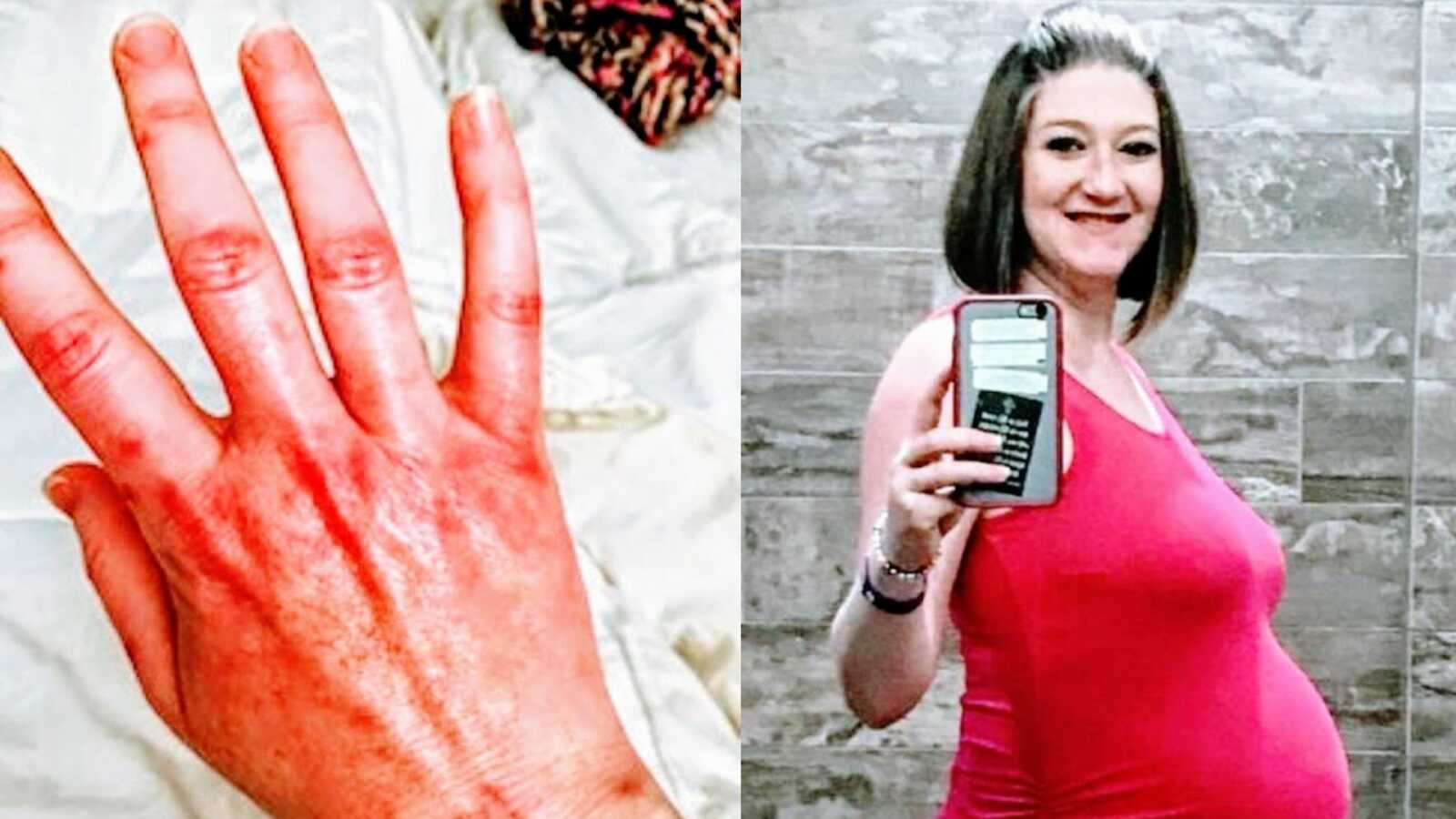“I am honestly not sure where my story begins. I cannot pinpoint exactly when my symptoms truly began. I can only look all the way back to my early teen years and see what could have been early manifestations of symptoms.
I was a competitive gymnast as a teenager. I can remember being more easily fatigued than my teammates. My mom took me to the doctor to have my iron and thyroid checked and I was deemed healthy. I injured my back at age 15, ending my gymnastics career. I should have healed relatively quickly, but the inflammation, pain, and severe spasms lingered for years. It was as if my body was overreacting to the injury.
Eventually, the pain became manageable, but never completely went away. At 15, the doctors were not taking my complaints seriously. All I heard was it should not hurt that bad and there was nothing more they could do to help aside from the pain medications, muscle relaxers, and repeated steroid injections. Imagine how it feels as a 15-year-old to be given up on.

In college, I was still plagued with neck and back pain and I was exhausted all of the time. I constantly missed classes because I could not drag myself out of bed. When I went to the campus physician, he determined I was depressed and started me on antidepressants. Since I was not depressed, the medication triggered ‘manic’ type episodes. Although he was not qualified to make the diagnosis, the same physician decided I must be bipolar.
Over the next two years, he prescribed numerous different antidepressants, mood stabilizers, and antipsychotic medications. The combination of the inappropriately prescribed medications caused auditory hallucinations and attempts at self harm. After two admissions to a psychiatric facility, a qualified psychiatrist evaluated me and determined I was not bipolar. He also suggested I speak to a different primary care physician about other possible medical causes for my exhaustion. By this time, I had been forced to drop out of college due to the chronic fatigue interfering with my ability to cope with my class schedule and side effects of the medications.
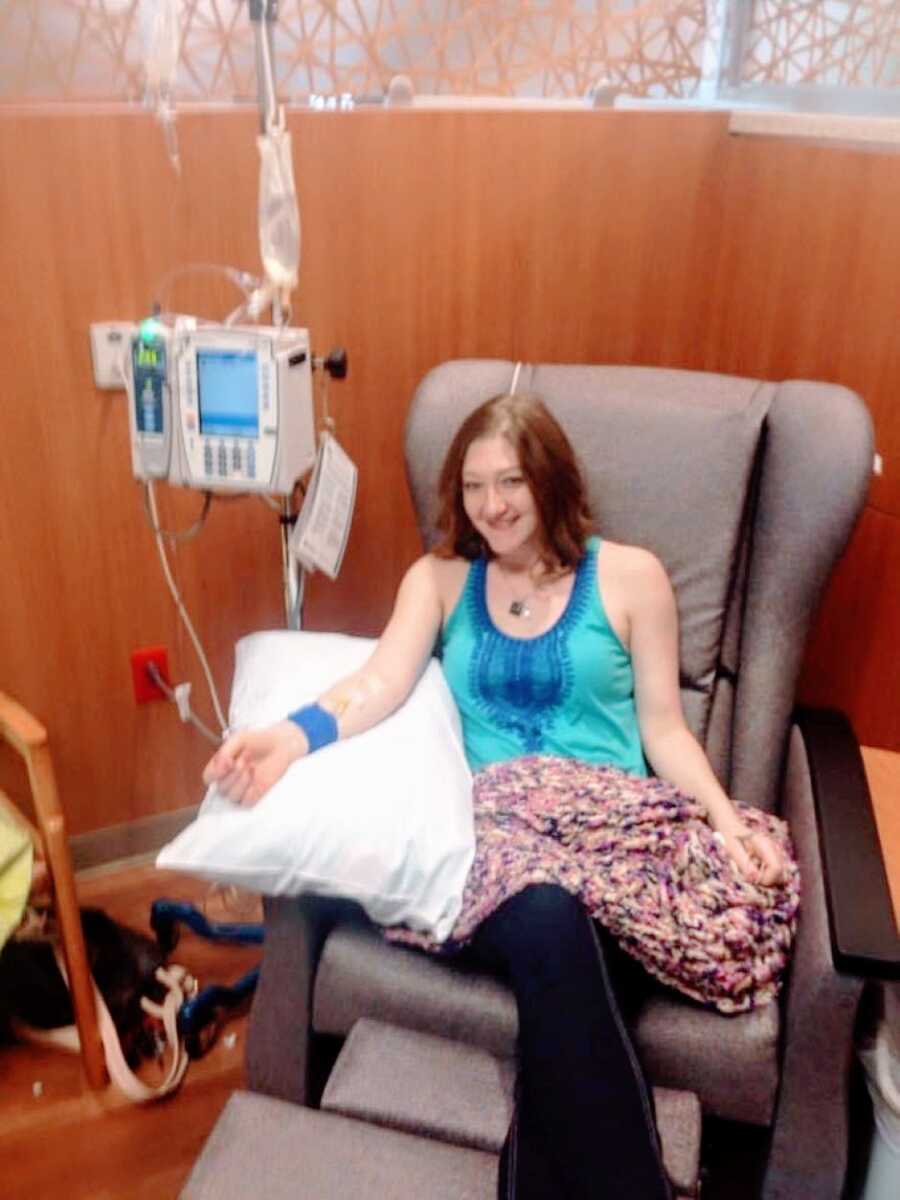
Over the next several years, I continued to see different doctors for my seemingly unrelated symptoms. All the doctors saw was an otherwise healthy 20-something who complained a lot about random ailments, and I was continually dismissed. I had wrist surgery in 2006 to remove a painful cyst. However, after two months I still had severe pain and inflammation, and was put on steroids. At my follow up up, I told the surgeon that while on steroids I felt better than I had in years. I had more energy, I was able to sleep better, and I did not constantly hurt. If you know anything about what it is like for an otherwise healthy person to be on steroids, you would agree feeling great on steroids is not ‘normal.’ Concerned about an underlying inflammatory condition, he ordered labs that came back abnormal, indicating there was in fact something off with my body. Finally, someone would listen because there was proof I was not crazy. Or so I thought.
I made an appointment with my PCP, who ran more labs with the same results and referred me to the only rheumatologist a several-hour drive away. I had my first appointment the day after my 24th birthday in February 2007. I would love to say after seeing him I found the answers to all of my issues, but believe it or not, this was only the beginning. It took almost a year of lab work, my own research on what the abnormal results meant, tracking my symptoms and begging the specialist to listen to me before I was finally diagnosed with Systemic Lupus Erythematosus, and could start medication to control my symptoms and prevent the progression of the disease.
The problem was my then-husband and I were moving from Abilene, Texas to College Station. I made an appointment with the only rheumatologist I could find in College Station to keep the ball rolling. My previous specialist sent my records to the new doctor. The doctor ordered more labs and at my follow up he told me what I had heard over and over since the age of 15. ‘There is nothing wrong, you do not need to come back.’ I was devastated. It did not help that my then-husband also felt the same way. He always told me there was nothing wrong with me. I was just weak and lazy. I was able to find another rheumatologist in the area whom I was able to see a few times, but according to her, I was not sick enough to do anything.
For the next four years I dealt with my symptoms and flares as best I could. I had a great internist who was great about listening to me and addressing my issues. I got divorced, married my high school sweetheart in 2012, and moved to a new town. Life was better than ever. I was in a loving and supportive marriage and physically I felt really good. I was able to stay home and take care of the house, cows, dogs, and my husband. Around September of 2012, I decided to start the P90X workout program. It was hard, but I loved it. About two months into it I noticed the workouts getting harder to finish instead of easier. Just getting out of bed in the mornings was becoming a familiar struggle. I began getting nauseous during workouts; my soreness was off the charts and when I actually began vomiting during workouts, I finally stopped working out completely.
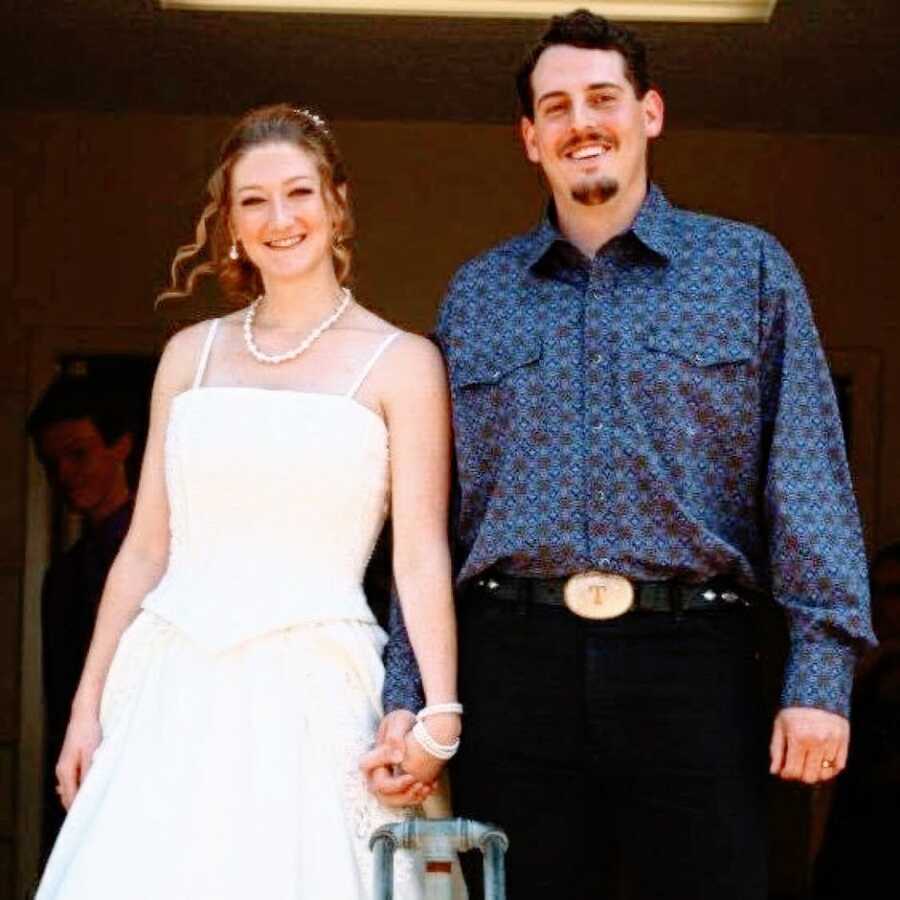
I made an appointment with my PCP, who was aware of my complicated medical history and all of the issues I had experienced. He took all of my symptoms seriously, and after some tests, it was determined I had overstressed my kidneys with the workouts. A few weeks after, I was in the emergency room with severe chest pain and pleurisy. Over the next year and a half I went from a fully functioning, relatively healthy 28-year-old to a shell of my former self. I was on steroids every few months from recurrent episodes of pleurisy. The joints in my hands would become so painful and stiff, I struggled with simple daily tasks. My PCP tried to talk me into starting chemotherapy medications, but it would mean my dreams of starting a family would be on hold indefinitely, and having a baby had been my dream since I was a small child.

Cognitive deficits began to plague me. I found conversations difficult. I could not find my words, I slurred my speech and often got lost driving to places I had driven to a thousand times. My doctor finally explained that in my condition, pregnancy posed too much of a risk to my life and the only way to have any chance of a future pregnancy was to get my lupus under control. At that realization, I caved and started Methotrexate, a chemotherapy immune suppressant.
Immune suppressants do exactly what it sounds like. With an autoimmune disorder, your body literally attacks itself. Instead of having the ability to determine the difference between self cells and invaders such as bacterial or viral infection, your antibodies attack healthy tissue. This can be any tissues in the body including brain, skin, blood, and organ systems. It is not uncommon for the attack to be so serious it causes organ failure, and it can be fatal depending on the severity of the flare. Patients are given immune suppressants to shut this process down as much as possible. As a result of shutting off the immune system, you are much more susceptible to infections. Even a sinus infection or a cold becomes a potentially serious issue when your body has very few resources to fight it off and they can progress to meningitis or pneumonia.
When you do develop an infection, you have to stop the immune suppressants to allow your body the opportunity to fight the infections. Stopping the immune suppressants, however, means your immune system is turned back on and can go back into overdrive. In 2014, I developed several infections and was off my medications for a few months to allow my body to recover from the infections. As a result, I developed a serious flare involving my heart, called pericarditis. My disease had now progressed beyond my PCP’s ability to treat and he was going to have to refer me to a rheumatologist. After my previous experiences with rheumatologists, I was absolutely terrified. My doctor assured me there was no way that this time, any rheumatologist could tell me I was not sick enough to help.
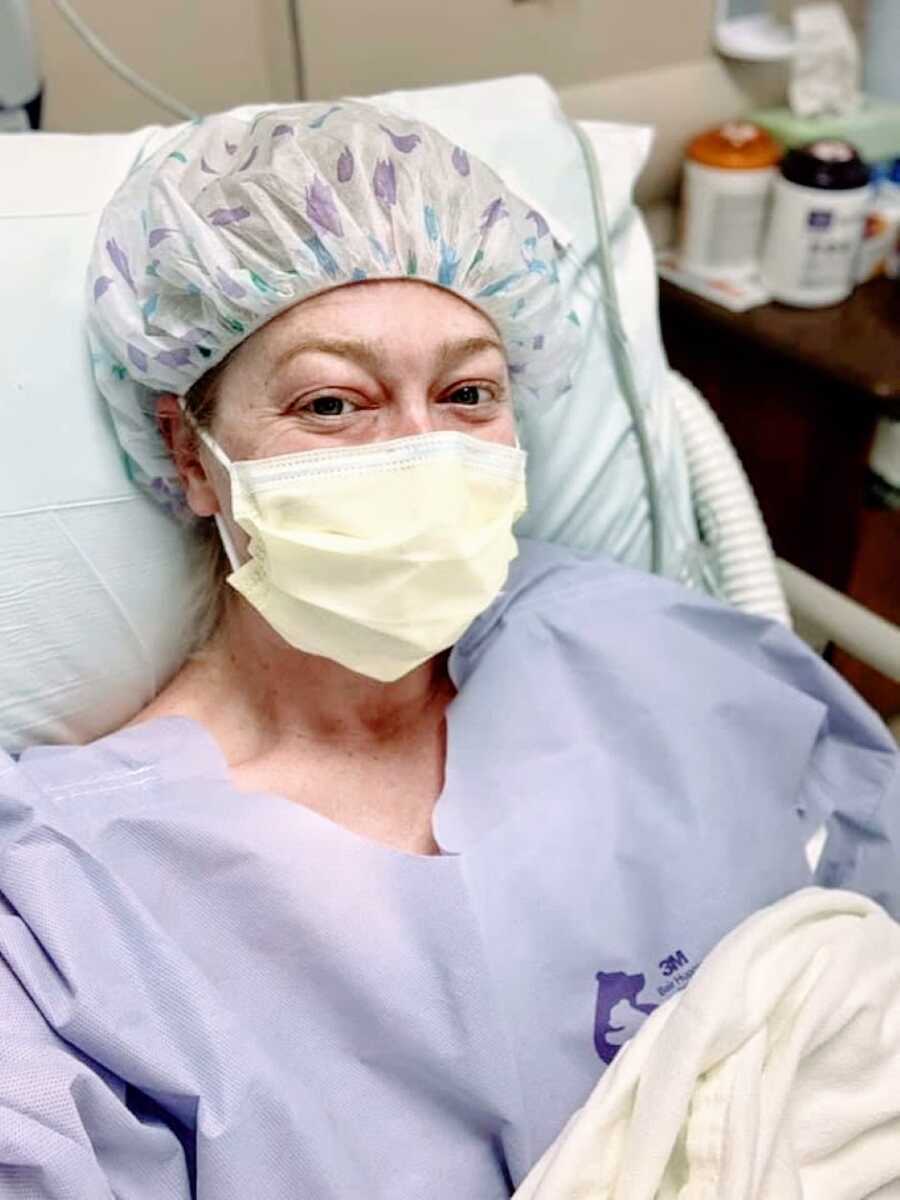
I began seeing Dr. Olga in 2014. Under her care, I have been on multiple IV therapy treatments as well as oral medications. In 2016, I was finally healthy enough to try for a baby. I got pregnant in April of 2016. I had experienced 3 miscarriages prior to this marriage which had led to a diagnosis of a Lupus-related clotting disorder, so I was excited and scared. Unfortunately, in June, after an emotional roller coaster I would not wish on my worst enemy, it was confirmed I had lost my pregnancy, likely twins. In September, I was pregnant again and miscarried in October.
In December, I saw two little lines on that little stick once again. This little one was determined enough to stick. My pregnancy was full of visits to the OB, MFM, bedrest, restrictions, labs, weekly ultrasounds, fetal monitoring, peeing in a million cups, blood thinners and worry. I was at high risk for blood clots, spontaneous fetal demise, intrauterine growth restriction, preeclampsia, and preterm labor. The baby was at risk for birth defects, low birthweight and a severe heart condition. On August 11, 2017 I was induced and gave birth to Faith, a perfectly healthy 6lb 13oz baby girl.

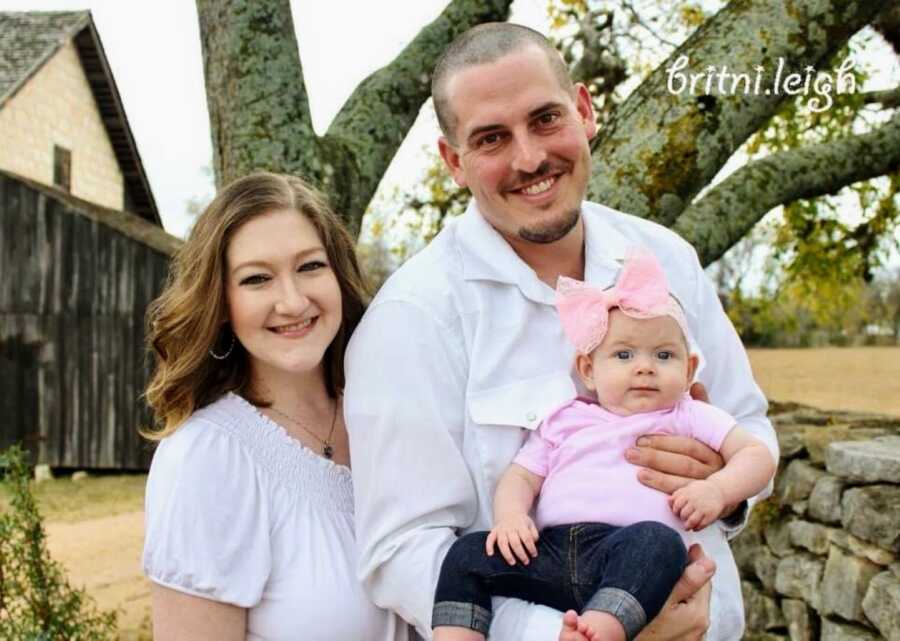
I remained in remission until Faith was just over a year old, but despite high dose steroids and multiple different strong medications, my disease is now uncontrolled. Being so immune compromised during the pandemic has been an absolute nightmare of precautions, isolation, and true fear. In 2019, rheumatoid arthritis was added to my impressive list of medical conditions. My blood work indicates there is something wrong with my white count and possibly my bone marrow. I’ll be following up with another specialist soon. In June 2021, I had a hysterectomy because of painful fibroids and because at 37 years old and with my medical conditions and medications, it would be life threatening for me to become pregnant again.
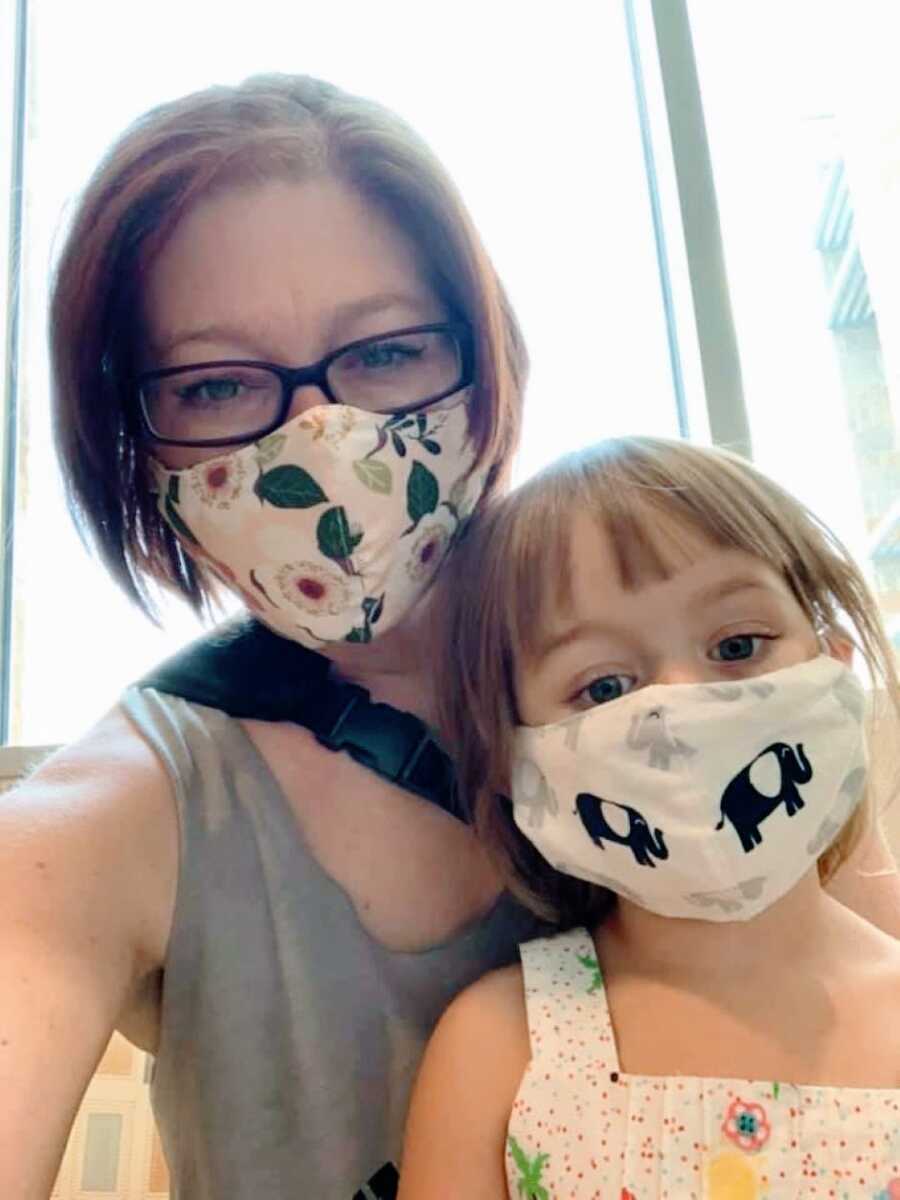
My health journey is far from over. I struggle with debilitating and worsening exhaustion, chronic pain, recurrent infections, increasing hair loss and the search for whatever else seems to now be attacking my system. My journey will probably never end, but that is exactly what life is: a journey. Some parts of that journey are easy and some are wracked with grief and sorrow. You have to take what life hands you and make it work. Some days I feel like I can accomplish anything and some days I feel like a burden to my family. Some days the only thing that gets me out of bed when I literally feel like I do not have the ability, is my daughter who needs her mom. Without my amazing friends and family, I could not do this.

If I could give any advice to someone dealing with chronic illness, it would be do not give up. Advocate for yourself. Find someone who will listen to you. We pay doctors for their services, and we can fire them as well. Build a trusted support system. Find joy in every day and in every win. If a loved one suffers from a chronic illness, be their support. They are not weak, lazy, or faking. Every day they are fighting a battle with their own body. Show compassion and patience. We already have to deal with the guilt we place on ourselves and judgement from others who do not know us.
Do not judge anyone by the way they look and assume they are not struggling. In every picture I look happy and healthy and I am smiling like my life is close to perfect. In reality I feel miserable, I am exhausted, I am in a lot of pain, and in a few of them I am in the middle of losing my babies and barely hanging on. But, I am hanging on, and that is the point.”



This story was submitted to Love What Matters by Kim Dobbs of San Antonio, TX. You can follow her journey on Instagram. Submit your own story here, and be sure to subscribe to our free email newsletter for our best stories, and YouTube for our best videos.
Read more stories like this here:
Please SHARE this story on Facebook and Instagram to encourage others to live life to the fullest.

